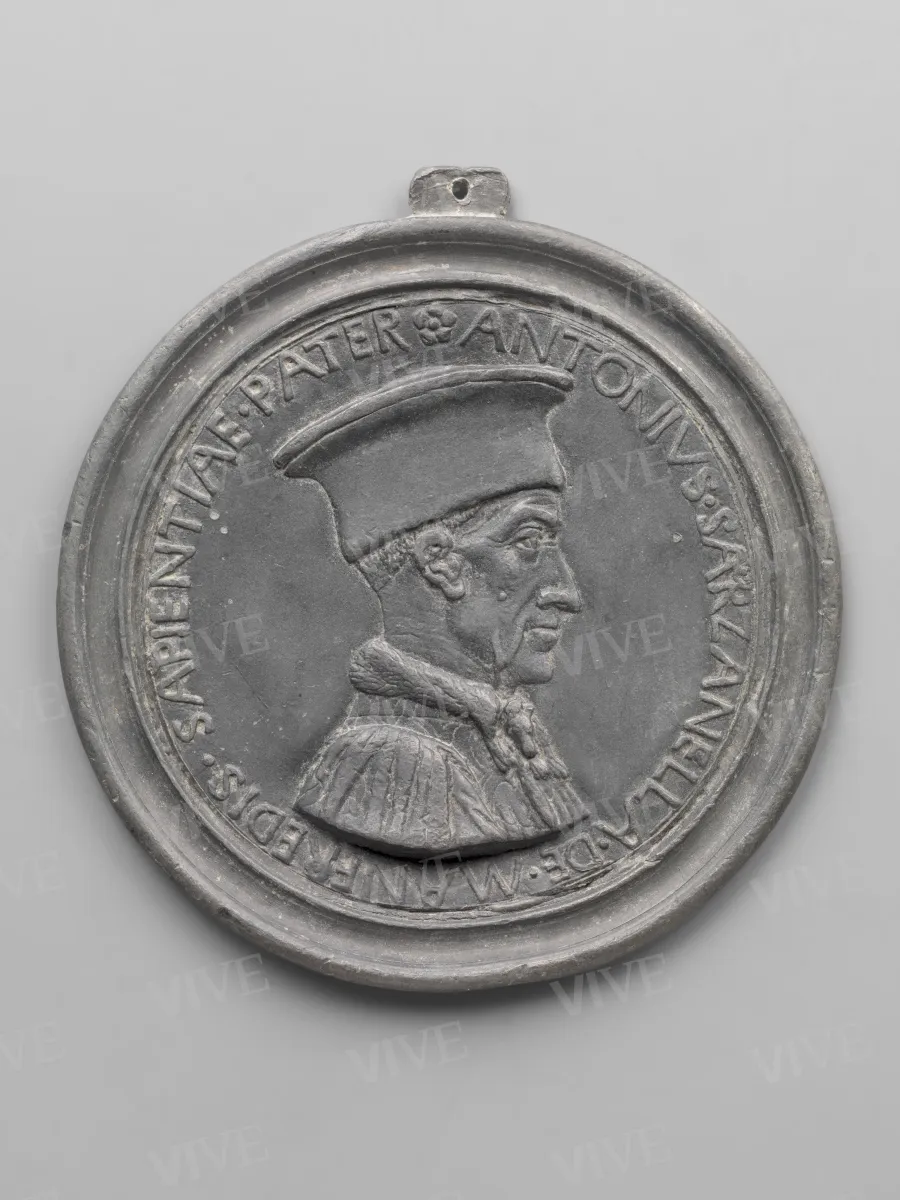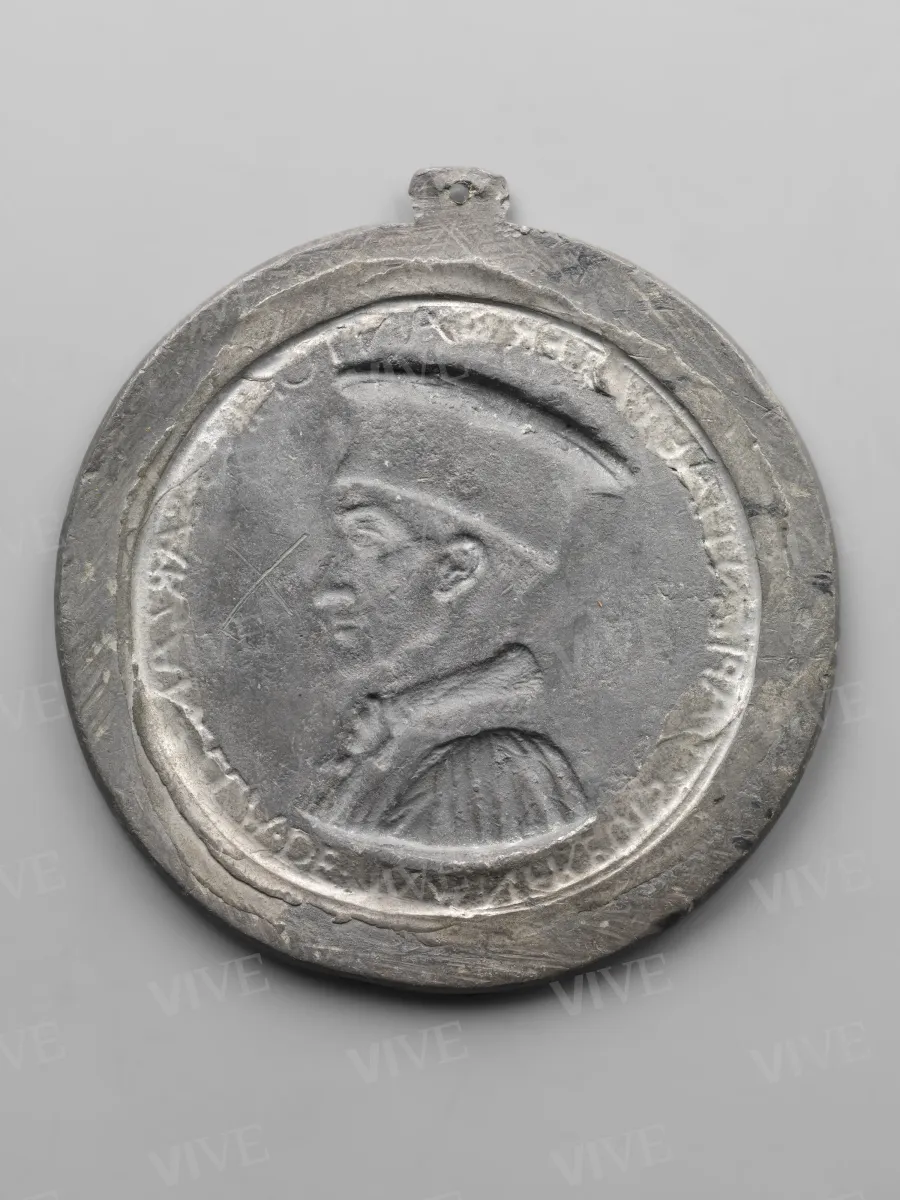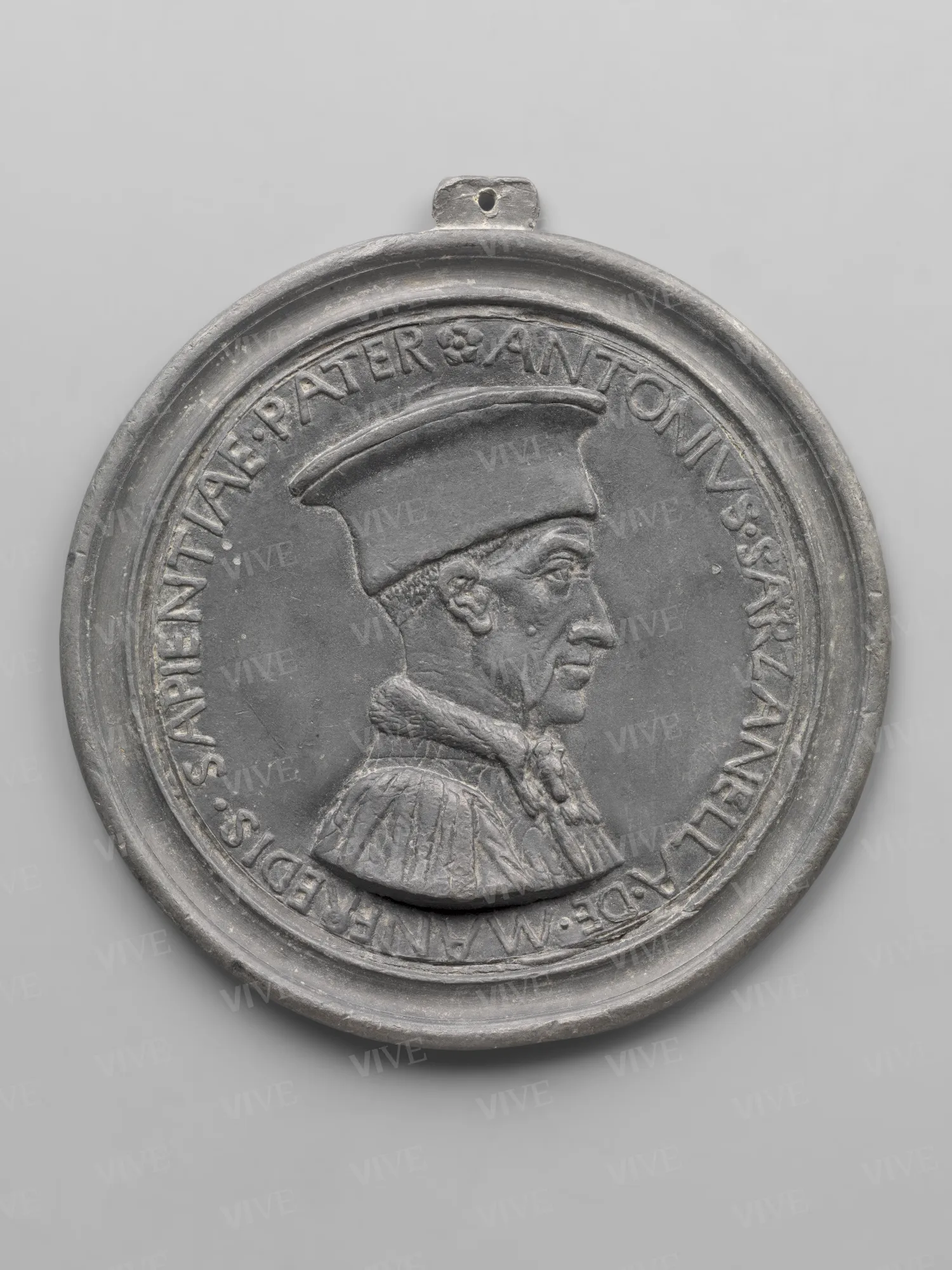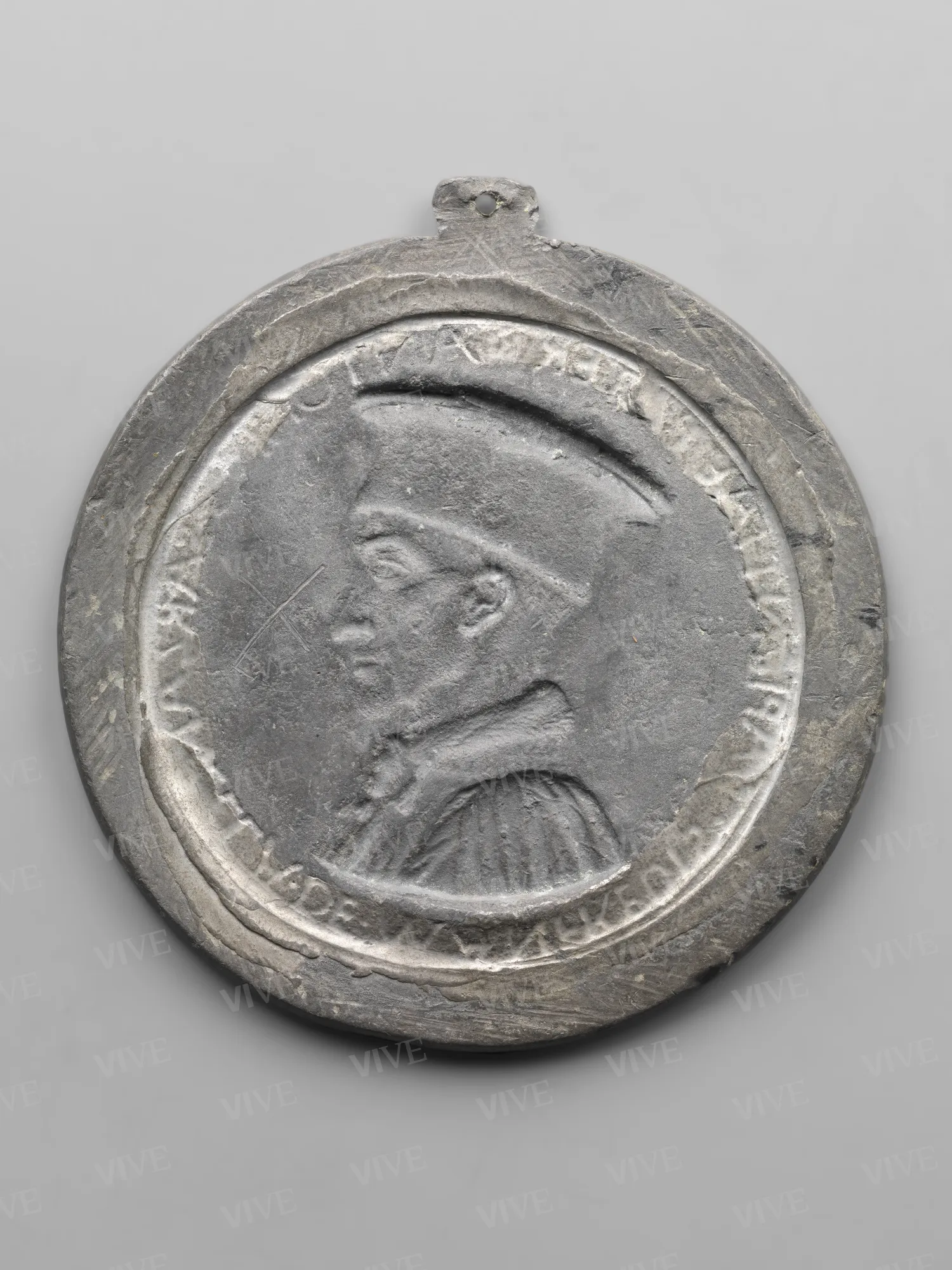Medal of Antonio Sarzanella de’ Manfredi
Sperandio Savelli da Mantova 1466-1470 (the model)
It is believed that the medal was commissioned by the descendants of the Este orator Antonio Sarzanella de’ Manfredi around 1470, following his death. The commission was likely given to Sperandio Savelli da Mantova, who was the most prolific medalist of the fifteenth century. This lead example includes only the obverse of the numismatic piece, featuring a right-facing profile portrait of the diplomat wearing a doctoral cap and a fur scarf. It is presumed to be a late casting.
It is believed that the medal was commissioned by the descendants of the Este orator Antonio Sarzanella de’ Manfredi around 1470, following his death. The commission was likely given to Sperandio Savelli da Mantova, who was the most prolific medalist of the fifteenth century. This lead example includes only the obverse of the numismatic piece, featuring a right-facing profile portrait of the diplomat wearing a doctoral cap and a fur scarf. It is presumed to be a late casting.
Details of work
Catalog entry
The inscription around the medal identifies the man in profile facing right, wearing a doctor's cap and a fur scarf, as the Este orator Antonio Sarzanella de’ Manfredi. Although portrayed at an advanced age, he began his diplomatic career early: born at the beginning of the fifteenth century, he was implicated in a conspiracy in favor of the Visconti family in 1423, sent by Pope Martin V as ambassador to Bologna in 1430, and represented the Florentine government in Venice in 1437. Due to his ability to manage conflict situations between Italian principalities, Leonello d'Este selected him to represent Ferrara's interests in Florence until at least 1460 (Gualandi 1963, pp. 7–39). After returning home, Sarzanella did not gain Borso d’Este’s appreciation. It is suggested by Enea Gualandi that the medal may have been commissioned either by the new marquis to formally dismiss Sarzanella, or by his descendants to commemorate his death around 1470. This example differs from other known instances as it is framed in metal, likely added later through soldering, and lacks a back. In other versions, the reverse side features a two-faced female figure seated on two dogs, with two mounds of leafless shrubs growing out of them. The allegory is encircled by the inscription “• IN TE CANA FIDES : PRVDENTIA SVMMA REFVLGET” (in you shines pure loyalty, supreme wisdom) and accompanied by the signature “• OPVS • • SPERAN DEI •,” indicating the authorship of Sperandio Savelli da Mantova (1425?–1504; Hill 1930, I, pp. 91–92, cat. 358). Sperandio was an artist with an extensive and varied career, recognized as the most prolific medalist of the fifteenth century, particularly esteemed for his portraiture skills. This is evident in the profile of Sarzanella, which exhibits meticulous attention to detail, including the mole on the cheek, the damask pattern of the robe, the fur, and even the small head of the mink (Scansani 2017).
According to George Francis Hill and Enea Gualandi, Sperandio may have created the prototype of the medal around 1463, when Sarzanella is documented to have been in Ferrara. However, it should be noted that Savelli was not present in Ferrara between 1457 and 1466 due to his involvement in the State of Milan (Hill 1930, I, pp. 91-92, cat. 358; Gualandi 1963, p. 38; Scansani 2019, p. 62). It is more probable that the medallist worked on the coin after his return to Ferrara. This is suggested by the similarities with the medal created by Sperandio in 1467 for Marino Caracciolo, which also features on the reverse a figure sitting on an animal flanked by two mounds with emerging shrubs (Hill 1930, I, pp. 91–92, cat. 358).
In 1909, Hill posited that a drawing of two men in profile, currently housed in the British Museum, was a preparatory study by Sperandio for the medals depicting Sarzanella and Catelano Casali (Hill 1909, p. 24). Nevertheless, the resemblances between the metallic and graphic portraits appear to be quite general, with certain physiognomic elements, such as the shape of the nose and hairline, displaying significant differences.
The piece in the Palazzo Venezia, although its surfaces are well finished, was likely cast at a later date, potentially after the artist's death. The internal measurements, such as the distance between the lower edge of the cap and the fur (8.5 mm), and between the tip of the nose and the center of the nape (21.3 mm), are smaller than those of other examples, such as the one in the National Gallery in Washington where those spaces measure 9.3 mm and 22.06 mm respectively. Similarly, the diameter is 67 mm compared to 77.5 mm for the American example (Pollard, Luciano 2007, I, p. 97 cat. 80). These dimensional differences can be attributed to the natural shrinkage of the material found in replicas.
Marco Scansani
Entry published on 27 March 2025
State of conservation
Good.
Inscriptions
Obverse: (within the border) (pink) “ANTONIVS • SARZANELLA • DE • MANFREDIS • SAPIENTIAE • PATER”.
References
Hill George Francis, Notes on Italian Medals - VIII, in «The Burlington magazine for connoisseurs», XVI, 1909, pp. 24-31;
Hill George Francis, A Corpus of Italian Medals of the Renaissance before Cellini, 2 voll., London 1930;
Gualandi Enea, Antonio Sarzanella di Manfredi: oratore estense del sec. 15.: carteggio inedito di Leonello d'Este: 1441-1450, Ferrara 1963;
Pollard John Graham, Luciano Eleonora, Renaissance Medals, 2 voll., Washington DC 2007;
Scansani Marco, Savelli, Sperandio, ad vocem, in Dizionario Biografico degli Italiani, 90, Roma 2017, pp. 793-796;
Scansani Marco, L’attività scultorea di Sperandio Savelli: marmi, terrecotte e committenze francescane, in «Studi di Memofonte», XXII, 2019, pp. 54-113.














